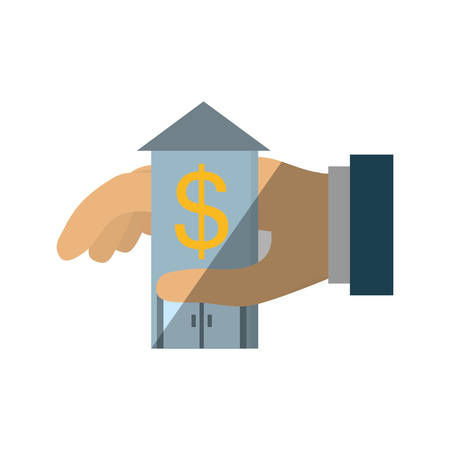Understanding the Role of a Mortgage Lender
If you’re buying your first home in the United States, one of the most important people you’ll work with is your mortgage lender. But what exactly does a mortgage lender do, and how do they fit into your home buying journey? Let’s break it down so you can feel confident as you start looking for your dream home.
What Does a Mortgage Lender Do?
A mortgage lender is a financial institution or individual that provides the money you need to buy a home. They review your finances, help you choose a loan, and make sure you get the funds for your purchase. From pre-approval to closing, they guide you through the steps needed to secure your mortgage.
Types of Mortgage Lenders
Not all lenders are the same! In the U.S., you’ll usually work with one of these three:
| Lender Type | What They Are | Pros | Cons |
|---|---|---|---|
| Banks | Traditional financial institutions (like Wells Fargo or Chase) | Familiar names, wide range of products, local branches for in-person help | May have stricter requirements, sometimes slower processing |
| Credit Unions | Member-owned cooperatives (like Navy Federal or local credit unions) | Usually lower rates and fees, more personal service | You must qualify for membership, fewer branch locations |
| Online Lenders | Digital-only companies (like Rocket Mortgage or Better.com) | Convenience, fast application process, competitive rates | No face-to-face service, can be less flexible if issues arise |
How Lenders Impact Your Home Buying Process
Your choice of lender affects not just your interest rate but also how smoothly your home purchase goes. Some lenders may offer better customer service, while others might have faster approvals or lower fees. It’s a good idea to compare offers from several types of lenders before making a decision.
2. How to Shop for the Right Lender
Why Choosing the Right Lender Matters
When you’re buying your first home in the U.S., picking the right mortgage lender is just as important as finding the right house. A good lender can make the process smoother and help you save money over time. It’s worth taking some extra steps to compare your options, secure the best interest rate, and know exactly what you’re signing up for.
Smart Strategies for Comparing Lenders
Don’t settle for the first offer you get. Shopping around is key. Here are a few simple ways to compare lenders:
- Get Multiple Quotes: Ask at least three different lenders for quotes on interest rates, fees, and loan terms.
- Compare Loan Estimates: Each lender will provide a Loan Estimate form. Look closely at the “Interest Rate,” “Monthly Payment,” and “Closing Costs” sections.
- Check Reviews: Read online reviews or ask friends and family about their experiences with different lenders.
Lender Comparison Table
| Lender | Interest Rate | Origination Fees | Estimated Monthly Payment | Customer Service Rating |
|---|---|---|---|---|
| Lender A | 6.25% | $1,000 | $1,850 | 4.5/5 |
| Lender B | 6.10% | $800 | $1,830 | 4.0/5 |
| Lender C | 6.30% | $950 | $1,860 | 4.7/5 |
How to Secure the Best Rates
- Improve Your Credit Score: The better your credit score, the lower your rate will likely be.
- Consider Your Down Payment: A larger down payment may qualify you for better rates and lower fees.
- Ask About Discount Points: Sometimes, you can pay upfront to lower your interest rate—ask if this makes sense for you.
- Lock Your Rate: If you find a good rate, ask your lender about locking it in to protect against market changes while you close on your home.
The Right Questions to Ask Every Lender
You don’t have to be an expert—just know which questions to ask! Here are some examples:
- What types of loans do you offer?
- What is the current interest rate, and is it fixed or adjustable?
- What are all the fees I’ll need to pay?
- How long does your approval process usually take?
- If rates drop before closing, can I get a lower rate?
- Is there a prepayment penalty if I pay off my mortgage early?
- Can I get a breakdown of my monthly payment (principal, interest, taxes, insurance)?
- Who will service my loan after closing?
Your Next Steps: Stay Organized!
Create a simple spreadsheet or use a notebook to keep track of each lender’s offers and answers to your questions. This way, you’ll feel more confident making a decision that fits both your budget and your long-term goals.

3. The Loan Pre-Approval Process
Why Pre-Approval Matters
Getting pre-approved for a mortgage is one of the most important steps for first-time homebuyers in the U.S. It shows sellers that you are serious and financially ready to buy, and it gives you a clear idea of what you can afford before you start house hunting. Many real estate agents and sellers will only work with buyers who have a pre-approval letter from a lender.
Step-by-Step Overview of Pre-Approval
- Choose a Lender: Shop around for reputable lenders—banks, credit unions, or mortgage brokers—and compare rates and terms.
- Submit an Application: Fill out a pre-approval application with your chosen lender. This usually involves providing basic personal and financial information.
- Provide Documentation: Be prepared to submit documentation to verify your income, assets, debts, and employment status.
- Credit Check: The lender will run a credit check to review your credit score and history.
- Lender Review: The lender reviews all documents and your financial profile to determine how much they’re willing to lend you.
- Receive Pre-Approval Letter: If approved, you’ll get a pre-approval letter stating the maximum loan amount you qualify for. You can use this letter when making offers on homes.
Documents You’ll Need as a First-Time Buyer
| Document Type | Examples |
|---|---|
| Proof of Income | Recent pay stubs, W-2 forms, tax returns (last 2 years) |
| Proof of Assets | Bank statements, investment account statements |
| Personal Identification | Driver’s license, Social Security card |
| Employment Verification | Recent pay stubs, employer contact information |
| Debt Information | Credit card statements, car loan statements, student loan info |
Tips for a Smooth Pre-Approval Process
- Gather all necessary documents before starting your application to avoid delays.
- Avoid making big purchases or opening new lines of credit during the pre-approval process.
- If you’re self-employed, be ready to provide additional paperwork like business tax returns or profit-and-loss statements.
- Your pre-approval typically lasts 60 to 90 days; if it expires, you may need to update your documents and reapply.
4. Common Types of Home Loans
When you’re buying your first home, understanding the different types of mortgage loans available in the US can help you make a smarter decision. The right loan depends on your financial situation, credit score, and long-term goals. Here’s a quick guide to the most popular home loan options and how to choose what works best for you.
Popular Mortgage Options in the US
| Loan Type | Who It’s For | Main Features | Down Payment |
|---|---|---|---|
| Conventional Loan | Most buyers with good credit and steady income | Not government-backed; flexible terms; often requires higher credit score | As low as 3% (typically 5-20%) |
| FHA Loan | First-time buyers or those with lower credit scores | Backed by the Federal Housing Administration; easier qualification; mortgage insurance required | As low as 3.5% |
| VA Loan | Active-duty military, veterans, and eligible spouses | No down payment required; backed by Department of Veterans Affairs; no private mortgage insurance (PMI) | $0 down (in most cases) |
| USDA Loan | Buyers in qualifying rural areas with moderate to low income | No down payment; government-backed; must meet location and income limits | $0 down (with eligibility) |
How to Decide Which Loan Fits Your Needs
- If you have strong credit and savings: Conventional loans often offer better rates and flexibility if you can make a larger down payment.
- If your credit score is lower or you have limited savings: FHA loans can make it easier to qualify with a smaller down payment.
- If you’re a veteran or active-duty service member: VA loans are hard to beat thanks to no required down payment and no PMI.
- If you’re buying in a rural area: USDA loans could help you purchase with zero down if you meet the requirements.
Tips for First-Time Buyers:
- Check your eligibility for special programs based on your background or location.
- Compare interest rates, fees, and insurance costs for each loan type before deciding.
- Your mortgage lender can walk you through the pros and cons of each option based on your finances.
5. What to Expect During the Application Process
Applying for a mortgage can feel overwhelming, especially for first-time buyers. Knowing what to expect can make the process smoother and less stressful. Here’s a step-by-step look at the timeline, paperwork, and communication you’ll encounter as you move from loan application to final approval.
Timeline: How Long Does It Take?
The mortgage application process typically takes anywhere from 30 to 45 days from start to finish. Here’s a basic breakdown:
| Step | Estimated Timeframe |
|---|---|
| Loan Application Submission | 1 Day |
| Pre-Approval Review | 1-3 Days |
| Document Collection & Processing | 1-2 Weeks |
| Home Appraisal & Underwriting | 1-2 Weeks |
| Final Approval & Closing Disclosure | 3-7 Days |
| Closing Day (Sign Documents) | 1 Day |
Papers and Documents Youll Need
Lenders will ask for a lot of information to verify your income, assets, debts, and identity. Be prepared to provide:
- Recent pay stubs (last 2-3 months)
- W-2 forms or tax returns (last 2 years)
- Bank statements (last 2-3 months)
- Photo ID (driver’s license or passport)
- Proof of additional income (if applicable)
- Details on any outstanding loans or debts
- Information about the property you’re buying
Communication with Your Lender
Your lender will be in touch with you throughout the process—usually by phone, email, or through an online portal. It’s important to respond quickly to requests for information or documents so your loan isn’t delayed. Don’t hesitate to ask questions if anything is unclear; lenders are used to working with first-time buyers and are there to help.
Tips for Smooth Communication:
- Create a folder (digital or physical) for all your documents before you start.
- Add your lender’s contact info to your phone and check emails regularly.
- If you receive a request for more paperwork, send it as soon as possible.
- If you don’t understand something, ask your lender—they’ve seen it all before!
6. Avoiding Common First-Time Buyer Mistakes
Understanding Typical Lender Pitfalls
Buying your first home can be exciting, but working with mortgage lenders comes with its own set of challenges. Many first-time buyers make avoidable mistakes that can cost them time and money. Here’s what to watch out for so you can protect your financial interests.
Misunderstanding Closing Costs
A common mistake is underestimating or misunderstanding closing costs. These are fees you pay at the end of your mortgage process, and they can add up quickly. If you’re not prepared, you might end up short on cash when it’s time to close.
| Common Closing Costs | What They Cover |
|---|---|
| Origination Fee | Lender’s charge for processing your loan application |
| Appraisal Fee | The cost for evaluating your home’s value |
| Title Insurance | Protects you and the lender if title issues arise |
| Recording Fees | Officially registers the property in your name |
| Escrow Deposit | Funds held for taxes and insurance payments |
Tip:
Ask your lender for a Loan Estimate early in the process, which will break down all expected costs. Don’t hesitate to question any fees that seem unclear or higher than expected.
Pitfalls to Watch Out For With Lenders
- Not Shopping Around: Don’t settle for the first lender you talk to. Rates, fees, and terms can vary widely.
- Ignoring Pre-Approval Limits: Just because you’re approved for a certain amount doesn’t mean it fits your budget. Focus on what you can comfortably afford each month.
- Skipping Fine Print: Always read all documents carefully before signing anything. Look out for adjustable rates or hidden penalties.
- Poor Communication: If a lender is hard to reach or avoids answering questions, consider it a red flag.
- Making Large Purchases Before Closing: Taking on new debt (like buying a car) can impact your loan approval last-minute.
How to Protect Your Financial Interests
- Stay Organized: Keep records of every communication and document related to your mortgage.
- Bargain Shop: Get at least three quotes from different lenders before making a decision.
- Create a Budget: Factor in closing costs, moving expenses, and emergency funds—not just the down payment and monthly payments.
- Ask Questions: There are no dumb questions when it comes to such a big investment. Make sure you understand every step before proceeding.
- Avoid Big Financial Changes: Wait until after closing to make any significant changes to your finances or credit profile.
Navigating the mortgage process doesn’t have to be overwhelming if you know what pitfalls to avoid and how to advocate for yourself with lenders. Stay informed, ask questions, and keep your financial goals front and center throughout the process.
7. Building a Relationship with Your Lender
When you’re buying your first home, working closely with your mortgage lender can make the process smoother and less stressful. Here’s how you can build a strong relationship with your lender to help you along every step of your homebuying journey.
Tips for Maintaining Open Communication
- Stay Accessible: Respond quickly to emails, calls, or document requests. Timely communication helps avoid delays.
- Be Honest: Share accurate information about your finances upfront. This builds trust and helps prevent surprises later on.
- Ask Questions: Don’t hesitate to ask for clarification on loan terms, required documents, or next steps. No question is too small!
- Schedule Regular Check-Ins: Set up regular updates—whether by phone or email—to stay informed about the status of your loan application.
Negotiating Terms with Confidence
Your lender is there to help, but it’s important to advocate for yourself as well. Here are some key points to discuss:
| What to Negotiate | Questions to Ask |
|---|---|
| Interest Rate | Can you offer a better rate? Are there options for locking in today’s rate? |
| Fees and Closing Costs | Are any fees negotiable? Can you provide a detailed breakdown of costs? |
| Loan Terms | Is there flexibility in the loan type or repayment schedule? |
| Prepayment Penalties | Will I be charged if I pay off my mortgage early? |
Leveraging Your Lender as a Resource
- Tap into Their Expertise: Good lenders know the ins and outs of the local market and mortgage programs. Ask them for advice tailored to your situation.
- Use Their Network: Lenders often have connections with real estate agents, insurance providers, and inspectors. Ask for recommendations if needed.
- Avoid Surprises at Closing: Keep an open line of communication so you’re always aware of what’s coming next—especially as you move toward closing day.
Lender Relationship Checklist
- [ ] Respond promptly to all communications
- [ ] Double-check your financial information before submitting it
- [ ] Keep track of deadlines and required documents
- [ ] Communicate any changes in employment or finances ASAP
- [ ] Don’t be afraid to negotiate or ask questions—it’s your investment!


